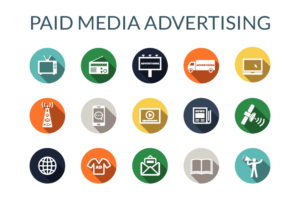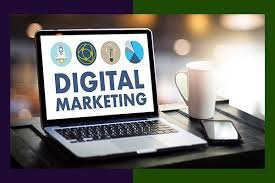Exploring the World of Paid Media: Strategies for Effective Advertising:
In the dynamic landscape of digital marketing, paid media has emerged as a powerful tool for businesses to reach their target audience and drive desired outcomes. Media encompasses various advertising formats, including search engine marketing (SEM), social media advertising, display advertising, and more. By strategically leveraging these channels, businesses can effectively promote their products or services, increase brand awareness, and generate leads or sales.
The Importance of Paid Media in Digital Marketing:
Paid media plays a crucial role in modern digital marketing strategies. It allows businesses to:
1. Target specific audiences: Paid media platforms offer advanced targeting capabilities, enabling businesses to reach their ideal customers based on demographics, interests, behaviors, and more.
2. Measure and optimize performance: With detailed analytics and tracking tools, businesses can monitor the effectiveness of their media campaigns and make data-driven decisions to optimize their strategies.
3. Complement other marketing efforts Paid media can work in harmony with organic marketing tactics, such as content marketing and social media engagement, to create a comprehensive and effective digital marketing strategy.
Developing a Successful Paid Media Strategy:
Crafting a successful paid media strategy requires careful planning and execution. Here are some key steps to consider:
1. Define your goals and objectives: Clearly define what you want to achieve with your paid media campaigns, whether it’s increasing brand awareness, generating leads, or driving sales.
2. Identify your target audience: Conduct thorough research to understand your ideal customers, their demographics, interests, and pain points. This information will help you create targeted and relevant ad content.
3. Choose the right platforms: Select the media channels that align best with your target audience and goals. Popular options include Google Ads, Facebook Ads, LinkedIn Ads, and programmatic display advertising.
4. Create compelling ad content: Develop eye-catching visuals and compelling copy that grab attention and convey your unique value proposition. Test different ad formats and messaging to optimize performance.
5. Set a realistic budget: Allocate a budget that aligns with your goals and expected return on investment (ROI). Consider factors such as competition, ad placement, and audience size when setting your budget.
6. Monitor and optimize :Continuously monitor the performance of your paid media campaigns and make adjustments as needed. Use A/B testing to experiment with different targeting, messaging, and creative elements to improve results. Leveraging Different Paid Media Channels
Each paid media channel offers unique advantages and caters to different audience segments. Here’s a brief overview of some popular options:
1. Search Engine Marketing (SEM): SEM involves advertising on search engine results pages (SERPs) through platforms like Google Ads and Bing Ads. It allows businesses to target users based on their search queries and intent.
2. Social Media Advertising: Social media platforms, such as Facebook, Instagram, LinkedIn, and Twitter, offer targeted advertising options to reach specific demographics and interests. These ads can include various formats, such as image, video, carousel, and stories.
3. Display Advertising: Display ads are visual ads that appear on websites, apps, and social media platforms. They can be used for branding, lead generation, or driving traffic to a website. Programmatic advertising, which uses automated bidding systems, has become increasingly popular in the display advertising landscape.
4. Video Advertising: Video ads are becoming increasingly popular due to their engaging nature and ability to tell a story. They can be placed on platforms like YouTube, Facebook, Instagram, and various websites.
5. Native Advertising: Native ads blend seamlessly with the content of the website or platform where they appear, making them less intrusive and more likely to be engaged with by users. Examples include sponsored content and in-feed ads on social media platforms.
Measuring and Optimizing Paid Media Performance
Tracking and analyzing the performance of media campaigns is crucial for determining their effectiveness and making informed decisions. Key metrics to monitor include:
– Click-through rate (CTR): The percentage of users who click on your ad after seeing it.
– Conversion rateThe percentage of users who complete a desired action, such as making a purchase or filling out a form.
– Cost per acquisition (CPA): The average cost of acquiring a new customer or lead through your paid m edia campaigns.
edia campaigns.
– Return on ad spend (ROAS): The revenue generated for every dollar spent on paid media.
By regularly reviewing these metrics and making adjustments to your targeting, messaging, and creative elements, you can optimize your media campaigns for better performance and ROI.
Conclusion:
Paid media is a powerful tool for businesses looking to effectively reach and engage their target audience in the digital age. By developing a well-rounded strategy, leveraging the right channels, and continuously monitoring and optimizing performance, businesses can drive measurable results and achieve their marketing goals. As the digital landscape continues to evolve, staying up-to-date with the latest trends and best practices in paid media will be crucial for maintaining a competitive edge.






